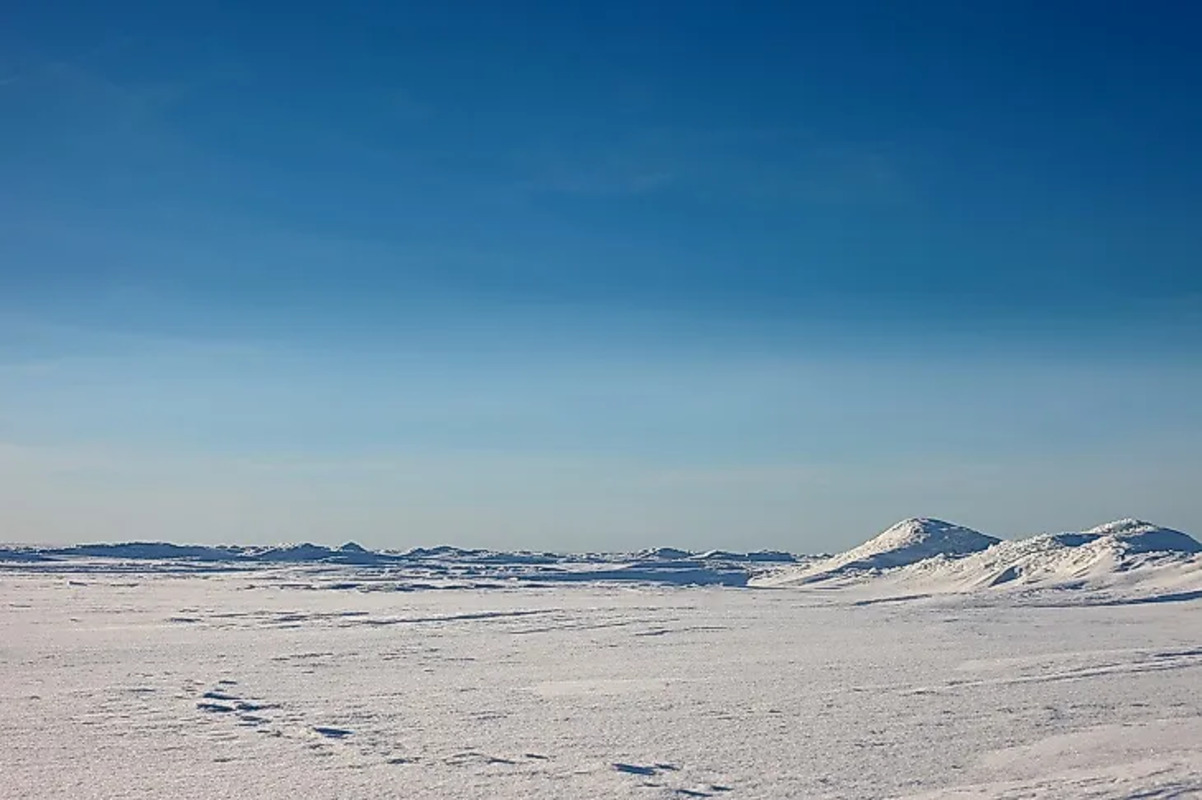The Antarctic Desert is the coldest, harshest, and one of the least explored regions on our planet. Most people imagine a desert as a hot, sandy place, but Antarctica completely defies this stereotype. Here, fierce cold, strong winds, polar nights, and incredibly dry air dominate, even though the entire continent is covered by thick ice sheets. This icy desert holds many unique natural mysteries and scientific marvels. Here are some fascinating and lesser-known facts about the Antarctic Desert that you might not know.
- The Antarctic Desert is the largest desert on Earth, covering over 14 million square kilometers. It encompasses almost the entire Antarctic continent as well as surrounding islands.
- In terms of precipitation, Antarctica receives even less than the Sahara Desert. Some areas get less than 20 millimeters of precipitation annually, and there are places where no rain or snow falls for decades.
- Air temperatures here reach extreme lows. The absolute record was recorded at the Vostok Station and measured –89.2°C, the coldest temperature ever recorded on Earth’s surface.
- The Antarctic Desert is covered by ice, with an average thickness of 2.5 to 3 kilometers, and in some places exceeding 4 kilometers. More than 90% of the world’s freshwater is stored in this ice.
- Despite the harsh climate, Antarctica is home to unique forms of life. Millions of penguins and seals inhabit the continent, and surrounding waters host whales, dolphins, and numerous fish species.
- Some regions of Antarctica are known as the Dry Valleys—the driest places on Earth. Winds in these valleys can reach speeds exceeding 300 kilometers per hour, and moisture is nearly absent. These valleys resemble the conditions on Mars and are often used for scientific experiments studying the possibility of extraterrestrial life.
- Antarctica does not belong to any country, and its territory is officially outside any national jurisdiction. Under the Antarctic Treaty, only scientific activity is permitted, while military presence and commercial exploitation are strictly prohibited.
- Dozens of international scientific stations operate on the Antarctic Desert, staffed year-round by researchers from around the world. During the Antarctic summer, up to 4,000 people may be present, while winter populations drop to several hundred.
- Sunlight distribution in Antarctica is uneven: during summer, there is a polar day when the sun does not set for several months, while in winter, a polar night brings complete darkness illuminated only by stars and the aurora australis.
- Winds in the Antarctic Desert are extremely strong, and the wind chill factor often makes it feel much colder than the actual temperature. These winds can move massive amounts of snow and ice, creating true snow dunes.
- Antarctica is the only continent without a permanent human population. There are no cities, villages, or roads, and all infrastructure is dedicated solely to supporting scientific research.
- The Antarctic Desert preserves many ancient natural artifacts. Ice cores contain frozen samples of the atmosphere, dust, and traces of ancient eras, allowing scientists to study Earth’s climatic history.
- The region is home to some of the largest icebergs on the planet. Some icebergs exceed the size of large cities and drift in the ocean for years, slowly melting under the sun and waves.
- Besides ice and snow, Antarctica also hosts so-called icy meteorites—fragments of rocky bodies that arrived from space and have been preserved under unique conditions.
- The Antarctic Desert houses the southernmost active volcano on Earth—Mount Erebus. It fascinates scientists with its icy caves and continuous emissions of gas and lava.
- The ocean around Antarctica has a unique water circulation system that influences the global climate. This is where the strongest cold currents form, regulating the temperature of the world’s oceans.
- In 1983, the “blood falls” phenomenon was recorded in Antarctica, where red iron-rich water flows out of a glacier. This natural wonder has become one of the symbols of the icy desert.
- The Antarctic Desert is a critical area for studying climate change because even slight changes in ice thickness or precipitation here reflect global environmental processes.
- Research shows that beneath Antarctica’s ice lie thousands of subglacial lakes, including Lake Vostok—one of the largest sub-ice lakes in the world. These isolated ecosystems may contain unique life forms.
- Despite the extreme conditions, life flourishes during the summer months. Millions of seabirds arrive to nest, and elephant seals, seals, and whales come ashore along the coasts.
These fascinating facts about the Antarctic Desert highlight how unique and mysterious this region of the planet is. It continues to surprise scientists and explorers with new discoveries while keeping many secrets for future generations. You might not have known about the variety of natural phenomena and records this desert holds, but these features make Antarctica a true treasure of the Earth. Learning these incredible facts will give you a new perspective on our world and help you appreciate its remarkable diversity.





